We all long for an escape into nature, but our busy lives and city dwellings often leave us yearning for a sanctuary where we can recharge and reconnect. If you’re looking for a way to bring the beauty and serenity of nature into your own living space, naturalist interior design is the answer. This article will explore the philosophy behind naturalist interior design, its key elements, and offer some creative ideas to help you transform your home into a nature-inspired haven. So, let’s dive in and find out how you can create your very own natural oasis without stepping outside your front door.
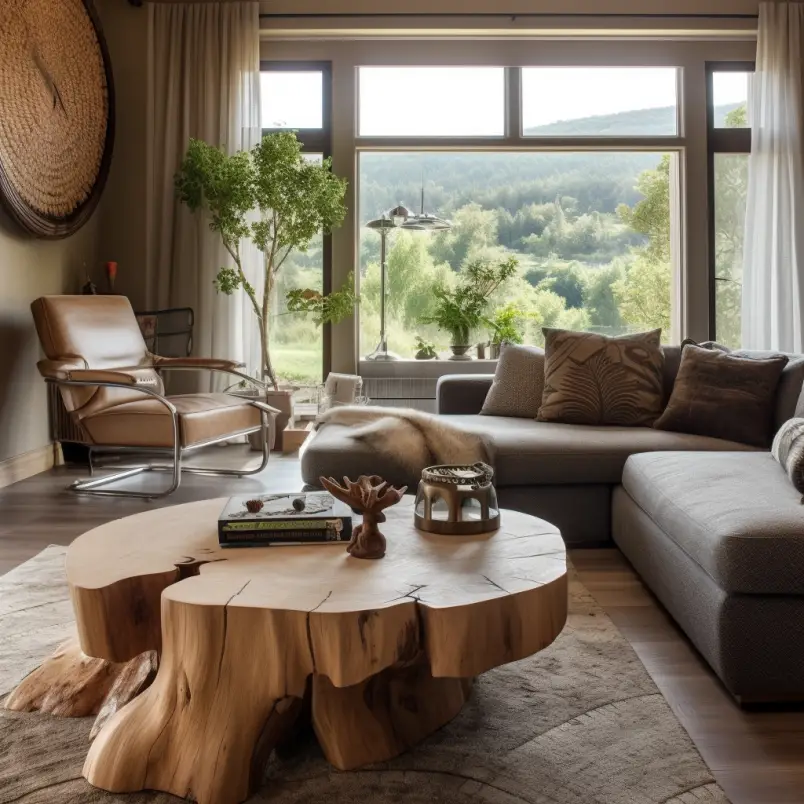
Table of Contents
The Naturalist Interior Design Philosophy
Embracing Nature
At the heart of naturalist interior design is a deep appreciation for the natural world. This design philosophy aims to create a harmonious connection between your indoor space and the outdoors, allowing you to enjoy the calming and rejuvenating effects of nature without leaving your home.
Sustainability and Eco-friendliness
Naturalist interior design not only focuses on aesthetics but also emphasizes eco-friendliness and sustainability. By incorporating eco-conscious choices in materials, furnishings, and appliances, this design approach helps reduce your environmental footprint while also creating a healthier living environment for you and your family.
Key Elements of Naturalist Interior Design
Natural Materials
Incorporating natural materials such as wood, stone, and organic textiles is a cornerstone of naturalist design. These materials not only add visual warmth and texture but also have a lower environmental impact compared to synthetic alternatives.
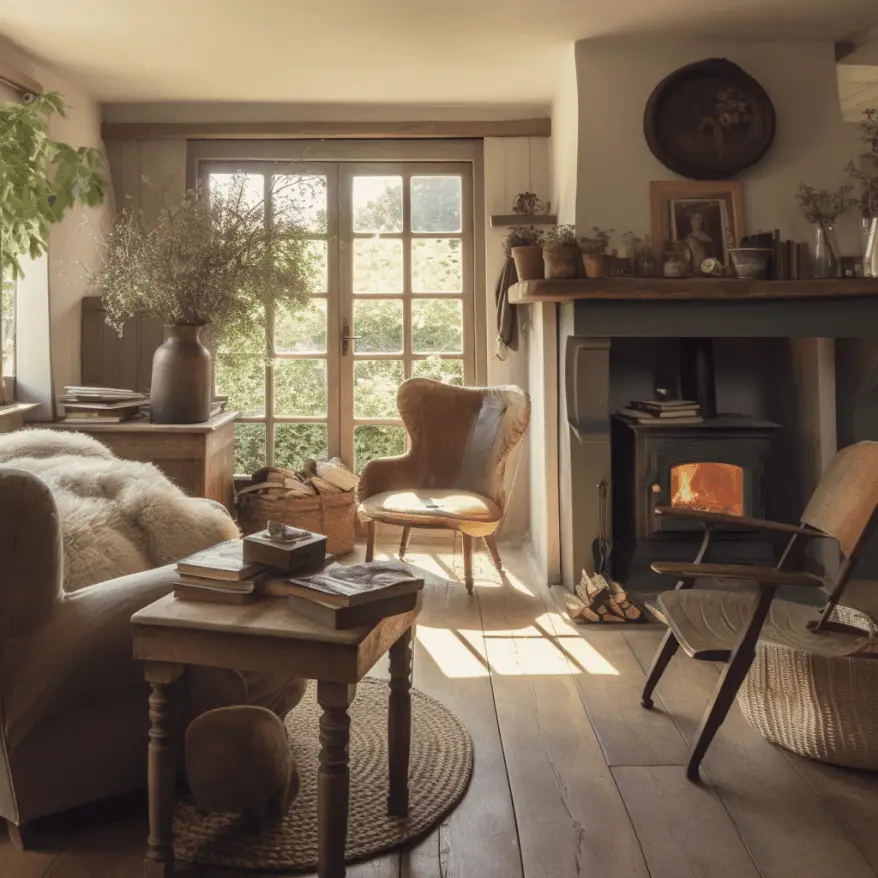
Color Palette
A naturalist color palette is inspired by the hues found in nature. Think of earthy tones like browns, greens, beiges, soft blues, grays, and whites. These colors create a soothing and harmonious atmosphere that evokes the serenity of the great outdoors.
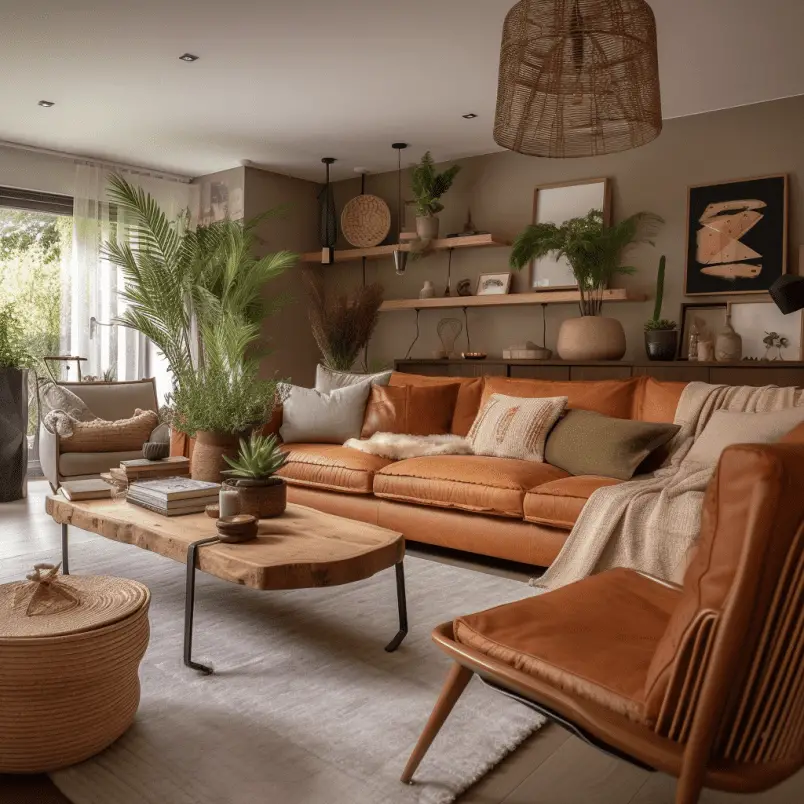
Biophilic Design
Biophilic design is the integration of nature into the built environment, aiming to satisfy our innate need to connect with the natural world. Incorporating elements like living walls, water features, and natural shapes can help create a more immersive and restorative space.

Natural Lighting
Maximizing natural light is a key aspect of naturalist design. Large windows, skylights, and strategically placed mirrors can help bring more sunlight into your home, creating a brighter and more uplifting environment.
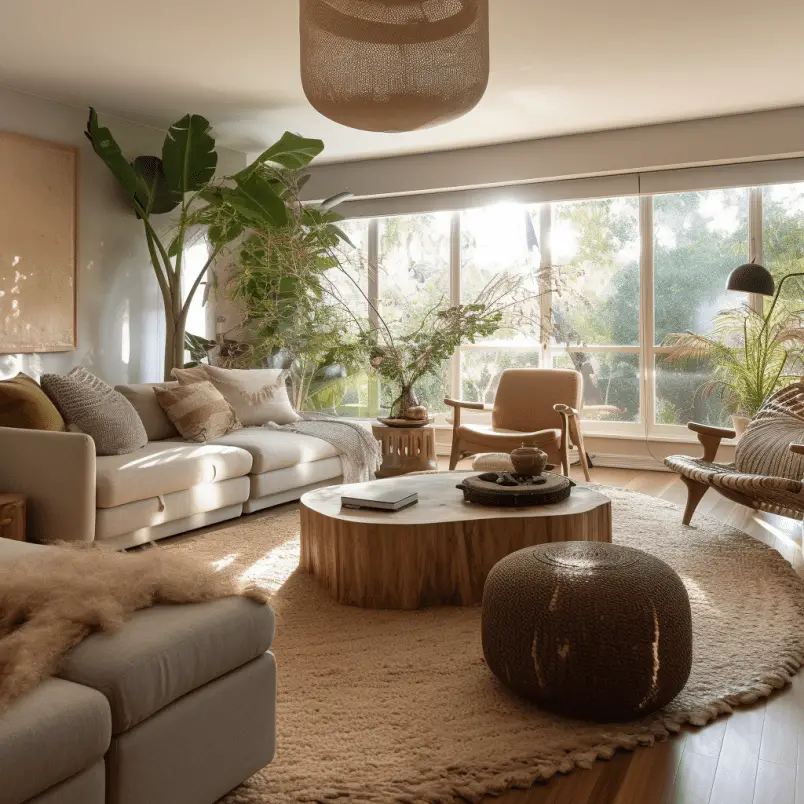
Indoor Plants
Indoor plants play a crucial role in naturalist interior design. They not only add a touch of vibrant greenery but also help improve air quality and reduce stress. From low-maintenance succulents to lush tropical plants, there’s a variety of options to suit your space and lifestyle.
Naturalist Interior Design Ideas
Living Wall
A living wall, also known as a green wall or vertical garden, is a striking and eco-friendly way to bring nature indoors. You can create a living wall with a variety of plant species, adding visual interest and texture while also helping to purify the air in your home.
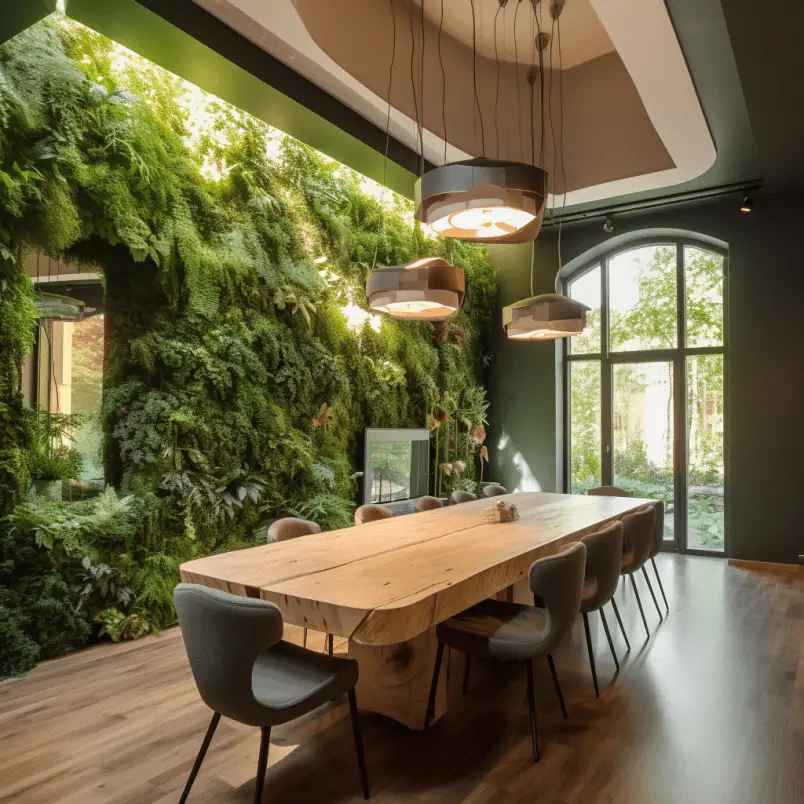
Natural Textures
Incorporating natural textures like woven rugs, linen curtains, and rattan furniture can help enhance the organic feel of your space. These elements provide a tactile experience that connects you with nature and creates a cozy, inviting atmosphere.
Earthy Accents
Decorate your home with earthy accents like pottery, wooden sculptures, and stone artifacts to complement the natural materials in your interior design. These unique pieces not only serve as conversation starters but also reinforce the connection to nature in your living space.

Nature-inspired Artwork
Adorn your walls with nature-inspired artwork, such as paintings, photographs, or prints depicting landscapes, plants, or animals. These visual elements can help transport you to your favorite natural settings and serve as a constant reminder of the beauty of the great outdoors.
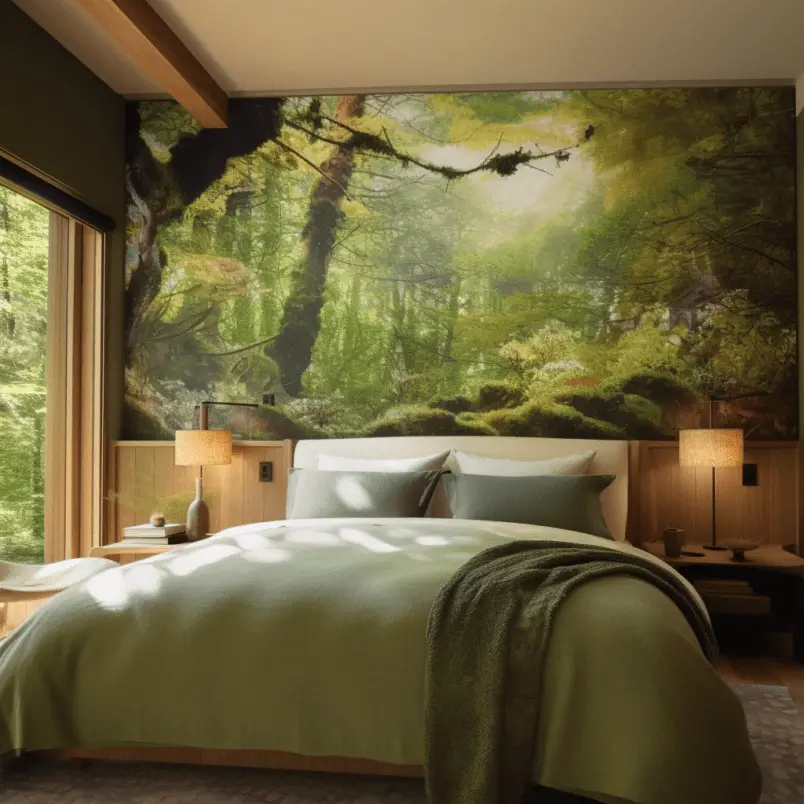
A Relaxing Corner
Create a relaxing corner in your home dedicated to reconnecting with nature. Consider setting up a comfortable reading nook near a window with a view, or create a meditation space surrounded by plants and natural elements. This designated area will provide a soothing retreat whenever you need a moment of tranquility.

Sustainable Choices in Naturalist Interior Design
Reclaimed Materials
Utilize reclaimed materials like repurposed wood, salvaged metal, or recycled glass in your naturalist interior design. These eco-friendly options help reduce waste and give your space a unique, character-filled touch.
Energy-efficient Appliances
Choose energy-efficient appliances and fixtures to minimize your environmental impact while also saving on energy costs. From LED lighting to Energy Star-rated appliances, there are plenty of options available to help you create a more sustainable home.
Water-saving Features
Incorporate water-saving features like low-flow faucets, dual-flush toilets, and drought-resistant plants to reduce water consumption and create a more eco-friendly living space.
Pros and Cons of Naturalist Interior Design
Naturalist interior design embraces the use of natural materials, colors, and elements to create a space that is harmonious with nature. This design style promotes a sense of tranquility and connection with the environment, while also incorporating sustainable practices. Here are some pros and cons of naturalist interior design:
Pros:
- Connection with nature: Naturalist interior design brings the outdoors inside, fostering a sense of peace and relaxation. This can improve mental well-being and reduce stress.
- Sustainability: This design style emphasizes the use of eco-friendly materials and practices, such as repurposing or recycling furniture and using energy-efficient lighting.
- Timelessness: Naturalist design elements tend to be timeless and not overly influenced by trends, which can make a space feel fresh and relevant for years to come.
- Air quality: Incorporating plants into the design can improve indoor air quality by filtering toxins and producing oxygen.
- Aesthetic appeal: The use of natural materials, textures, and colors can create an inviting and visually pleasing environment.
- Biophilic design: This design style can contribute to overall well-being, as humans have an innate connection to nature and respond positively to natural elements.
Cons:
- Cost: Natural materials and eco-friendly products can be more expensive than their synthetic counterparts.
- Maintenance: Some natural materials, such as wood or stone, may require additional care and maintenance to keep them in good condition.
- Limited color palette: The naturalist design style often utilizes a muted, earthy color palette, which may not appeal to everyone.
- Availability: Depending on your location, sourcing natural materials and eco-friendly products may be challenging or costly due to limited availability or long shipping distances.
- Potential allergens: The use of natural materials, such as wool or certain types of wood, can trigger allergies in some individuals.
- Overemphasis on nature: In some cases, a naturalist design may feel overly “rustic” or “earthy,” which may not suit everyone’s taste or align with their desired aesthetic.
Conclusion
Embracing naturalist interior design can help you create a serene and rejuvenating environment that connects you with nature without leaving your home. By incorporating natural materials, a nature-inspired color palette, biophilic design elements, and sustainable choices, you can transform your living space into a beautiful, eco-friendly sanctuary. So, go ahead and escape to nature without stepping outside—your personal oasis awaits!
FAQ
Can naturalist interior design work in small spaces?
Yes! Naturalist design can be adapted to any space, regardless of size. Focus on maximizing natural light, incorporating plants, and choosing multi-functional furniture to create a nature-inspired haven in a small space.
How do I maintain indoor plants in a naturalist interior design?
Choose plants that suit your lifestyle and the conditions of your home. Opt for low-maintenance plants if you’re new to gardening, and research the specific care requirements for each plant to ensure they thrive in your space.
Are there any budget-friendly options for incorporating naturalist design?
Absolutely! You can find budget-friendly options by shopping secondhand for furniture and décor, using reclaimed materials, and repurposing items you already have. Additionally, consider DIY projects to create your own nature-inspired artwork or décor pieces.
How do I choose the right color palette for my naturalist interior design?
Start by drawing inspiration from nature itself. Earthy tones like browns, greens, and beiges, as well as soft blues, grays, and whites, work well in naturalist design. Don’t be afraid to experiment with different shades and tones to find the perfect combination that suits your taste and space.
Can I mix naturalist design with other interior design styles?
Of course! Naturalist design can be easily combined with other design styles, such as modern, minimalist, or bohemian. The key is to find a balance between the elements of each style, ensuring that the overall design feels cohesive and harmonious.

